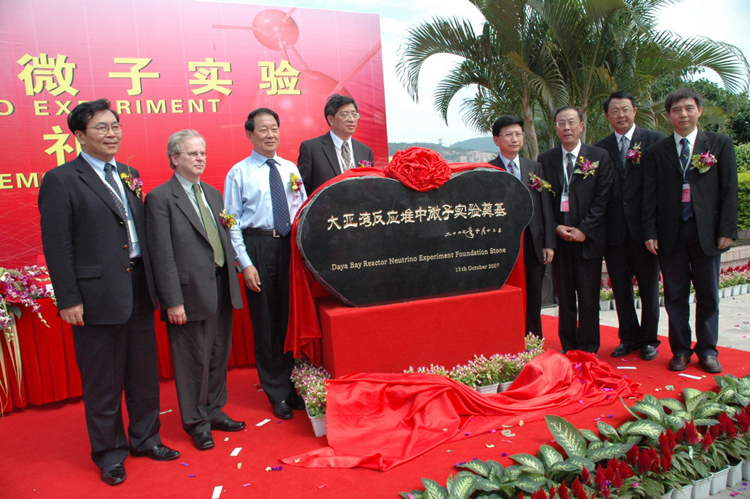Daya Bay Reactor Neutrino Experiment to Celebrate Groundbreaking
'I believe the Daya Bay Reactor Neutrino Experiment will achieve a full success with the efforts and wisdom of the scientists…' remarked by Jinpei Cheng, Vice Minister of Ministry of Science and Technology, in the ceremony.
Neutrinos (and their antiparticles) come in three kinds, and in recent years several experiments have determined that the three types can morph, or oscillate, among themselves. Oscillation has a profound consequence, namely that neutrinos, once thought to be massless, do indeed have a tiny mass; neutrinos fill the Universe, and their effect on the evolution and structure of the Universe is therefore significant. Learning more about this new kind of neutrino oscillation may also help scientists unlock the secret of why antimatter is largely missing from the Universe, which makes our existence possible.
Robin Staffin, Director of the Office of High Energy Physics of U.S. Department of Energy, said, ’At the ground where we are now stand, scientists will measure with the world’s greatest precision, one of the most important parameters of nature.’
The ceremony on October 13 marks the beginning of civil construction near the Daya Bay and Ling Ao nuclear power plants, the sources of the antineutrinos to be measured in the experiment. Three experimental halls connected by long tunnels will be excavated in the adjacent mountains, which will shield the experiment from cosmic rays. Each hall will feature a 10-meter deep pool of water, within which the antineutrino detectors (eight in all) will be deployed. The water protects the detectors from radiation that could interfere with measurements and also helps identify any unwanted particles.
Yifang Wang of the Institute of High Energy Physics, co-spokesperson of the Daya Bay Experiment, commented that ‘The project is now progressing well…We are now ready for manufacturing and mass production of the equipment.’ The first experimental hall is scheduled to be ready by the end of 2008. Commissioning of the detectors in this hall will take place in 2009. Construction will continue and is anticipated to last about two years, with installation of the last detector scheduled for 2010. ‘The completed experiment will be the best in the world for investigating this new, unknown kind of neutrino oscillation using nuclear reactors,’ Kam-Biu Luk of the University of California at Berkeley, co-spokesperson of the experiment, said.
Chunli Bai, Executive Vice President of the Chinese Academy of Sciences, said, ‘The Daya Bay Reactor Neutrino Experiment bears great importance in strengthening international collaboration in the field of basic science.’
The Daya Bay Collaboration is made up of thirty-five institutions with a total of over 190 collaborators from three continents, working together to build the experiment. The project is supported by the Ministry of Science and Technology of China, the Chinese Academy of Sciences, the National Natural Science Foundation of China, the Guangdong Provincial Government, the Shenzhen Municipal Government, the China Guangdong Nuclear Power Group, and the Office of High Energy Physics of the U.S. Department of Energy. Additional funding is being provided by the U.S. National Science Foundation, other countries and regions including Hong Kong, Taiwan, the Czech Republic, and Russia. The Daya Bay Reactor Neutrino Experiment is one of the largest cooperative scientific projects between China and the U.S., and is establishing a model for future cooperation in the realm of scientific research.
